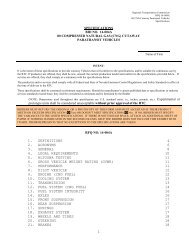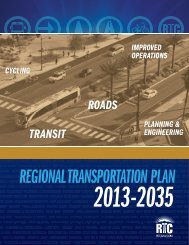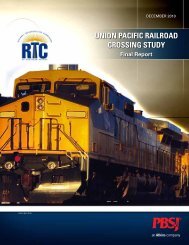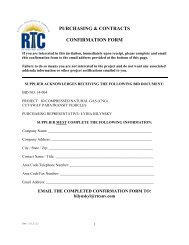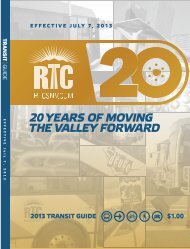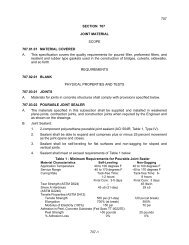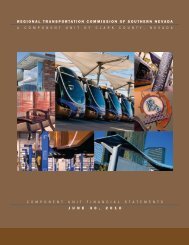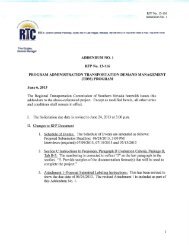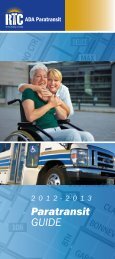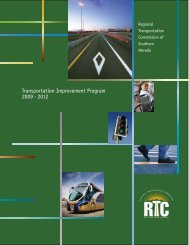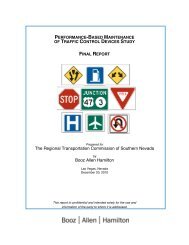(Blue Diamond Road) Corridor Study - Regional Transportation ...
(Blue Diamond Road) Corridor Study - Regional Transportation ...
(Blue Diamond Road) Corridor Study - Regional Transportation ...
Create successful ePaper yourself
Turn your PDF publications into a flip-book with our unique Google optimized e-Paper software.
2. Current Conditions of <strong>Study</strong> Area RTC SR-160 <strong>Corridor</strong> <strong>Study</strong><br />
2.10 TRANSIT SERVICES<br />
2.10.1 Route Descriptions, Service Levels, and Ridership<br />
Public transportation in the Las Vegas Valley is provided by the Citizens Area Transit (CAT).<br />
The system consists of 49 routes served by 305 buses, carrying close to 150,000<br />
passengers everyday in the greater Las Vegas Valley. CAT provides standard fixed-route bus<br />
service to parts of southwest Las Vegas Valley. Most routes operate 5:30 a.m. to 1:30 a.m.<br />
seven days a week, while some routes operate 24 hours a day. Weekend service is usually<br />
the same, however, some headways may be extended.<br />
The Downtown <strong>Transportation</strong> Center (DTC) and the South Strip Transfer Terminal (SSTT)<br />
are major transfer points for CAT routes. The DTC is operated by the City of Las Vegas and<br />
the SSTT is operated by the RTC. For the purposes of this study, the SSTT is not within the<br />
study boundaries and will not be discussed further. The DTC will soon be replaced by the<br />
Central City Intermodal <strong>Transportation</strong> Terminal (CCITT), as previously mentioned. Routes<br />
are categorized based on route type:<br />
<br />
<br />
<br />
100-series routes operate in a north-south direction.<br />
200-series routes operate in an east-west direction.<br />
400-series routes serve as connectors and circulators.<br />
Currently, there is no transit service along the SR-160 corridor. Route 117 operates along<br />
Las Vegas Boulevard South between the South Strip Transfer Terminal and several casino<br />
and resort locations to the south.<br />
CAT service along the SR-160 corridor has not been established largely because this area of<br />
southwest Las Vegas has consisted of low-density, rural neighborhoods where the rate of<br />
automobile ownership per household is among the highest in Clark County. Additionally,<br />
the fragmented street network between SR-160 and I-215 does not allow for the extension<br />
of 100-series routes south into the SR-160 area.<br />
With several Major Projects currently underway, such as Mountains Edge, Rhodes Ranch,<br />
Pinnacle Peaks and Southern Highlands, the demand for transit services is beginning to<br />
materialize.<br />
2-27



